This is a Contax RTS III, a semi-professional 35mm SLR camera produced by Kyocera of Japan starting in 1990. The Contax name was licensed to Yashica in 1973, at which time a series of well equipped camera bodies using the Contax name were sold. The original Contax RTS first debuted in 1975 and was a premium midrange camera, designed to compete with similar SLRs in the market. When Kyocera bought Yashica in 1982, they continued to improve and sell Contax cameras, including this RTS III in 1990. This is a very advanced camera, loaded with nearly every feature a semi professional photographer could want, including a fast 1/8000 top shutter speed, a variety of shooting modes, and aperture priority auto exposure. Like all Contax cameras produced by Kyocera and Yashica prior to that point, it used the C/Y bayonet mount which was shared between Contax and Yashica branded cameras.
Film Type: 135 (35mm)
Lens: 35mm f/2.8 Carl Zeiss Distagon T* coated 6-elements
Lens Mount: Contax/Yashica Bayonet
Focus: 1.5 feet to Infinity
Viewfinder: Fixed SLR Pentaprism
Shutter: Vertically Traveling Focal Plane
Speeds (Auto): 32 – 1/8000 seconds, stepless
Speeds (Manual): X, B, 4 – 1/8000 seconds
Exposure Meter: TTL SPD Center Weighted and Spot Meter w/ Aperture Priority AE
Battery: (6x) 1.5vv AA or (1x) 6v 2CR5 Lithium Battery
Flash Mount: Hot Shoe, 1/250 flash X-sync speed
Weight: 1392 grams (w/ lens and batteries), 1151 grams (no lens, w/ batteries)
Manual: https://www.cameramanuals.org/contax/contax_rts_iii.pdf
History
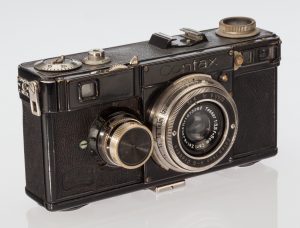
Throughout the 20th century, the name “Contax” became synonymous with quality made, high precision cameras. Originally appearing in 1932, the first Zeiss-Ikon Contax camera was designed to compete, and improve upon the Leica III. Designed by Dr. Heinz Küppenbender, the Contax bested the Leica with a faster and more secure bayonet lens mount, a rangefinder that used glass prisms instead of mirrors, a removable back instead of a bottom loading design, and came with a huge selection of some of the best Zeiss lenses in the world.
The Contax was an innovative and ambitious camera, but it was also very expensive and had questionable reliability and ergonomics. Later versions of the Contax addressed nearly all of these issues and eventually became world class cameras in the same league as their German competition. The Contax would heavily influence Nippon Kogaku’s first Nikon camera in 1948 and would be the basis for the Soviet Kiev rangefinder which would remain in production until the 1980s.
Until World War II, all Contax cameras were produced by Zeiss-Ikon in Dresden, Germany which would become the target of multiple Allied bombing raids during the war. Most Dresden area camera makers sustained heavy losses and in many cases, were totally destroyed. After the war, what little remained of Dresden’s camera factories would fall under the rule of Soviet controlled East Germany.
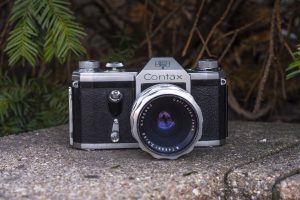
From this point, the history of the Contax name would split into two. Stuttgart based Zeiss ownership insisted the design and trademarks belonged to them, and a new and improved Contax rangefinder would be designed and sold in West Germany, and in East Germany, a completely unrelated Single Lens Reflex camera would be released in 1949.
This new Contax SLR would be innovative for it’s use of a pentaprism viewfinder which addressed one of the major shortcomings of SLRs of the time, but would also be the first successful SLR to use the “universal” M42 screw mount. Both the East and West German Zeiss companies would become embroiled in a trademark dispute over the Contax name and as a result of that lawsuit, only Contax SLRs sold within East Germany would have the name Contax, whereas any exported out of the country would be renamed the Pentacon.
Both the West German Contax rangefinder and the East German Contax SLR would be produced throughout the 1950s and both would be discontinued around 1961, being replaced by more modern models.
The 1960s would not be kind to the German camera industry. A combination of a reliance on outdated designs and technologies, combined with the rapid rise of the Japanese camera industry saw many once powerful German optics companies falter. In East Germany, nearly every Dresden area camera maker would be combined into a single government controlled entity called VEB Pentacon Dresden, never to use the Contax name again.
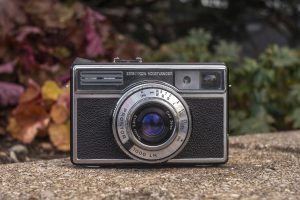
In West Germany, Zeiss-Ikon would continue on with a larger number of mid to low end cameras and in the mid 1960s would merge with Voigtländer, releasing several new models such as the Icarex SLR and Vitessa 500/1000 series using the expertise of both companies.
In 1973, realizing that the company’s best chances of competing with Japanese camera makers, was to partner with a Japanese camera maker, an agreement between Carl Zeiss and Yashica was made to cooperatively build a new line of 35mm SLR cameras using Zeiss’s excellent lenses and engineering, and Yashica’s expertise at electronics and manufacturing.

Two years later, an all new camera system was born with a new lens mount which would become known as the C/Y or Contax/Yashica mount. The first cameras to be released under this licensing agreement were the Yashica FX-1 and Contax RTS. The new Contax RTS was the first appearance of a Contax branded camera in over a decade and was a technological marvel. The Zeiss and Yashica partnership was mutually beneficial to both companies. Yashica would build the camera and be able to sell them with prestigious Zeiss lenses, and Carl Zeiss could license their trademark and build lenses for a Japanese camera that freed them from the high costs of building a camera themselves.
In 1983, Yashica would be acquired by Kyocera, a multi-national Japanese firm known for it’s role in the ceramics industry. In the years prior, Kyocera had been expanding into various consumer electronics markets, selling their own line of audio receivers, CD players, cassette decks, and speakers. At first, their ownership of Yashica saw few outward changes, as both Yashica and Contax branded cameras continued to be sold.
By the mid 1980s, as other camera makers like Minolta introduced auto focus SLRs, Kyocera decided to use the Yashica name solely for entry level point and shoot cameras, hoping to leverage mass production of cheap cameras, over more expensive and slow to sell SLRs. The Contax name would continue to be used on mid to high end cameras, although on a smaller number of models.
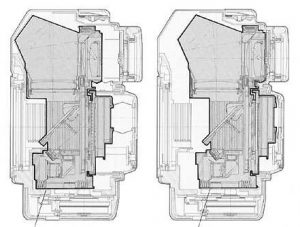
Contax cameras would continue to use the original C/Y lens mount and would remain manual focus only, except on one model, the Contax AX, which featured an innovative auto focus system, in which the entire film assembly, including the reflex mirror, pentaprism, and focal plane would move forward and back, accomplishing auto focus on lenses not designed for it. Through the use of adapters, a large number of other manual focus lenses, including some Hasselblad lenses could achieve automatic focus on this model.
A total of three different Contax RTS models would be released and would be considered the company’s semi-professional offering, with advanced shutters, electronic displays, and both AE and manual exposure models. In 1982, an updated model called the RTS II would be released, adding a quartz timed titanium shutter, TTL flash metering, and an improved viewfinder.
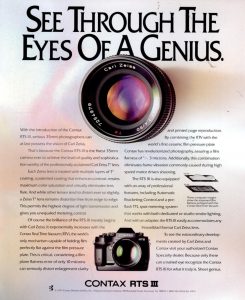
Finally, the third and final RTS model, called the RTS III would debut in 1990. Unlike the RTS II which saw only incremental updates to the original model, the RTS III was a significantly new camera. Featuring an all new, and much larger body, and a huge list of nearly every feature (except auto focus) that was available, the RTS III was a top tier camera aiming at the pro who wanted the latest and greatest technologies.
One of the camera’s most innovative features was a film plane vacuum that literally sucked the film flat up against the ceramic pressure plate at the moment of exposure, ensuring the most absolutely flattest surface to which film could be subjected. The idea was that in other cameras, microscopic variances in the surface of spring loaded pressure plates and film surfaces would create irregularities, throwing off the focus of the exposed image.
All this technology came with a price, and the price of the Contax RTS III was definitely high. As was the case with most professional level cameras, the RTS III was most commonly sold body only, as photographers were expected to buy their own lenses separately. In September 1990, the list price of the RTS III body was an eye-watering $3200, with the Carl Zeiss Planar T* 50mm f/1.4 lens an additional $430. Actual retail prices were likely a bit cheaper, but the combined list of price of $3630 for the camera and lens compares to $7125 today!
The following 10 page review from the September 1991 issue of Popular Photography gives an in depth look at the Contax RTS III along with two lenses. The article starts out with the most obvious observation that the RTS III is in the top two or three most expensive cameras in the world, loaded with features, but is manual focus only and ponders whether it is something that still has a place in the market.
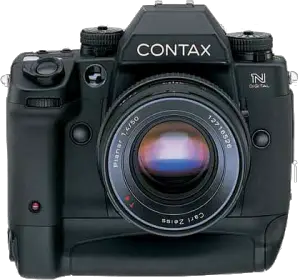
The Contax RTS III would be the last of the RTS series and the most advanced manual focus SLR the company would ever make. In 2001, an all new camera system called the Contax N would debut with automatic focus and an all new lens mount. Only two film models, the NX and N1, and one Contax N Digital would be made in the series before Kyocera would eventually discontinue the Contax brand in 2005.
Today, Contax cameras of every generation and every type are collectible. Contax rangefinders have a loyal following and in some circles, are as highly regarded as their Leica competitors. Contax SLRs definitely have their fans too, but a relatively short production run and less models than competing systems never allowed them to reach the same level of popularity as other 35mm SLRs did.
For the right collector or user, a Contax SLR, including the RTS III can still be a very compelling option with an excellent feature set, good build quality, and some of the best lenses ever made.
My Thoughts

Last December, this site celebrated it’s 6th anniversary, and as I near 250 cameras reviewed, I’ve been thinking that perhaps it is time to start to narrow down my personal collection to a few of my favorite cameras. I would like to get my collection down to a smaller selection of my favorite TLRs, SLRs, and rangefinders which I can regularly use.
When it comes to SLRs, especially modern ones with lots of features, it’s hard to go wrong with Nikon, as that’s a brand that has well established itself for quality, but also, I already have a bunch of lenses for them.
I didn’t want to default to Nikon simply out of convenience or familiarity, so I had thought I should give a few other of the better cameras of the 80s and 90s a consideration. Certainly Canon, Minolta, or maybe some other companies might have something just as good, or perhaps even (gasp!) better!
When I started to learn about the Contax RTS series, I knew they might be exactly what I was looking for as they were well built, innovative, and often came with some of the best lenses of the era. Instead of wasting my time on the earlier and less featured ones, I shopped for the top of the line RTS III model. I figured it was the newest and would be the most reliable of the bunch.
Prices were high on them, especially with a lens, but I was patient and eventually came across the RTS III with the Carl Zeiss Distagon you see here. The camera wasn’t cheap, but I justified it’s price as it would be a camera I would want to come back to over and over again.
When it arrived, I was overjoyed at the condition of both the camera and lens. The Contax RTS III is a BEAST! Weighing in at 1392 grams (3.06 lbs) with the lens and batteries, this is a camera well deserving of a good neck strap as it would require every bit of padding to tolerate on a long hiking expedition or family adventure to the zoo. Despite the weight though, the RTS III feels great in your hands. Whatever composite plastic material the body is made of has a slightly rubberized coating that’s just grippy enough to feel secure in your hands, even when holding it single handed.

The top plate is a bit cluttered, but thankfully, all of the main controls are labeled clearly enough that it is obvious what they do. While reading the manual is essential for a camera like this to fully understand it’s entire feature set, anyone whose handled a semi-pro SLR should be able to pick one up and shoot some basic photography without any advance training.
Although large LCD displays on the tops of cameras can be useful, they often come at the expense of physical controls, which I don’t particularly care for so I was happy to see only a tiny screen, leaving room for lots of knobs and switches.
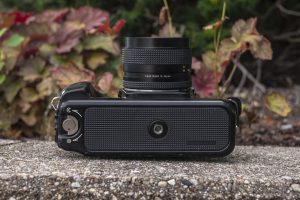
The entire bottom of the camera is a cover for the very large battery compartment. On the left is a rotating lock that allows you to remove the bottom plate. In the center is a standard 1/4″ tripod socket. Thankfully, it’s location is in the center of mass for the camera, as it’s heft would have been a problem for an offset tripod socket.
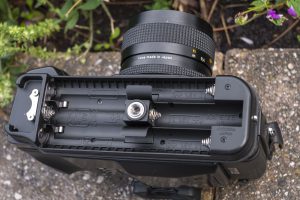
With the cover off, we see one of the most convoluted battery compartments of any camera I’ve ever seen. The Contax RTS III allows you to power it with either a single 6v 2CR5 battery, or six (!) AA batteries. While I applaud this level of flexibility as if you were on a shoot with the RTS III and the batteries died, it would be much easier to find AA batteries, I find it interesting that it needs six, when four would have equaled a single 2CR5’s 6 volts. With six batteries in the camera, it’s weight goes up considerably, so for most people, I have to imagine the smaller, lighter, and longer living lithium battery was probably the more popular choice.
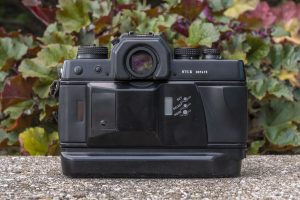
The back of the camera reveals the data back that came standard on the camera. Unlike other cameras with a data back, the RTS III prints the date in the space in between exposures, rather than within the image itself. This is useful when reviewing the physical negatives as you can get information about each image without it appearing inside the image. The door has a small bulge in the center where the electronics for the data back, but also the unique film pane vacuum reside. The door itself is removable, suggesting other options were available. The viewfinder eyepiece has a removable ring for attaching various accessories. On the side of the viewfinder prism is a small diopter adjustment dial for the viewfinder.
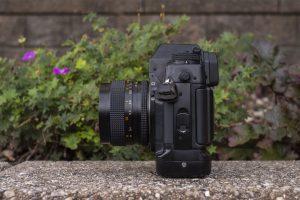
Opening the film compartment requires releasing a latch on the camera’s left side, below one of the strap lugs and a PC flash sync port.
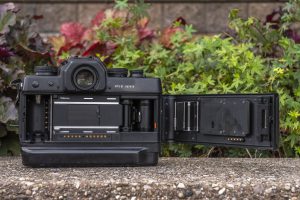
With the door open, we see a modern 35mm film compartment. Features like DX encoding, electronic contacts for various data backs, and a foam border around the film cassette peep hole on the door are all present. Notice that the film pressure plate has three narrow openings which are where the vacuum pressure comes from, but also the slightly larger rectangle is the opening for the data back, which imprints a date on the negative in between exposures.
Loading film into the camera is very easy as the RTS III has a quick load feature in which after inserting a new cassette, all that’s necessary is to extend the leader to the red mark and close the door, and the camera will do the rest.
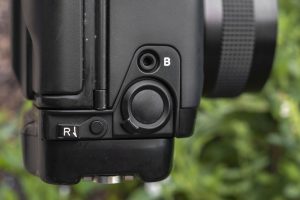
On the bottom of the camera’s right side are some interesting controls. The first is a manual rewind lever, but also a secondary shutter release and shutter release lock for vertical shots. Many cameras that had optional hand grips would include a second shutter release for vertical shots, but the RTS III includes this as standard. Considering the large size of the camera, having this second button allows for more secure handling of the camera when holding it sideways. The small hole with the letter B next to it is a threaded cable release socket for long exposure “bulb” shots.

Up front, with the lens off, we see the Contax’s C/Y bayonet mount which accepts all lenses designed for this and Yashica branded cameras.
A variety of buttons and levers up front allow for features like mirror lock up, depth of field preview, exposure check, and although it’s difficult to see, near the very top of the 12 o’clock position around the mount is a release tab for removing the viewfinder focusing screen. Several replacement options were available to suit a variety of shooting situations.
Attaching and removing a lens is as simple as pressing the button on the side of the mirror box near the 10 o’clock position and twisting the lens. I am not a fan of cameras with the lens release on this side as it’s close location to the hand grip makes it a tight fit. Otherwise attaching and removing lenses on the RTS III is uneventful.
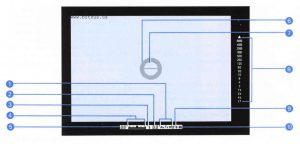
The Contax RTS III has a full information viewfinder. Shutter speeds from 4 seconds to 1/8000 line the right side with a liquid crystal display on the bottom. The display’s blue tint is not only pretty, but very easy on the eyes. I wonder why more companies didn’t include blue displays in their cameras.
The RTS III has interchangeable viewing screens, but the standard one has both a split image and microprism collar focus aides in the center of a very bright laser etched ground glass. I am a sucker for a good viewfinder and the Contax RTS III has one of the best I’ve seen. It is extraordinarily bright, tells you everything you could need to know about the status of the camera, and has a split image focus aide.
Within a few moments of getting the camera, it was clear the Contax RTS III was a special camera. Sure it was big and heavy, but it fit my hands perfectly, the controls were all logically placed, and I loved the viewfinder. Cameras are built to make photographs however, so how it shot would ultimately decide how much I would love this camera.
My Results
I was pretty excited to receive the Contax RTS III, as my plan was for this to be a model I would come back to over and over again well after this review was complete. I wanted it to be my “go to” 35mm SLR that I would use when I just wanted to shoot film for fun and no other reason.
When it arrived, everything looked good and other than a quick wipe down that I give any new camera, I loaded in six AA batteries and did a sequence of tests. The camera came to life and the shutter fired consistently at what sounded like the correct speeds.

Putting my eye to the viewfinder, I noticed that I couldn’t see the LCD display. Assuming it was turned off or set to a low brightness setting, I pulled up the manual on Mike Butkus’s site and attempted to figure out how to get it to come on. Starting to realize the viewfinder might be dead, I decided to just test it anyway, after all, everything else seemed to work OK. I loaded in a 24 exposure roll of Fuji 200 and went shooting. I was excited to see the results from the Zeiss Distagon 35mm lens as I’ve heard wonderful things about these T* lenses.
After firing off a few shots, I noticed that the small LCD on the top plate of the camera still registered 00 exposures. I fired off a few more shots, still 00. Wondering if perhaps the issue with the viewfinder LCD was causing the top plate LCD to not display correctly, I kept shooting, and shooting, and shooting. After what should have been more than 24 exposures, I got “that feeling” in my stomach. Fearing that perhaps the film wasn’t advancing, I opened the camera in a changing bag and could immediately feel the leader still there, not at all attached to the take up spool. None of my 24+ shots were recorded.
I’ll save you the suspense, but I played with the RTS III for a couple of days and concluded that not only was the viewfinder LCD completely dead, but the camera would never advance film. The RTS III has a quick load feature where extending the leader to a mark and closing the door should be enough to get it to load, but that never happened. I tried it a dozen times, even using 4 different rolls of film of different brands and speeds, thinking perhaps the film itself was the issue, but nothing worked.
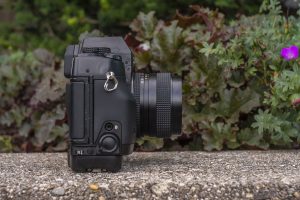
The seller who I bought this camera from claimed it to be in good working order, so I contacted him and arranged a return. Off the RTS III went and I got my money back. People often complain about bad experiences with eBay sellers, and although I was definitely disappointed that the camera wasn’t as good as I had hoped, the seller gladly refunded all my money including shipping and I had no problems with the return.
You’re probably thinking, “why are you reviewing a camera you couldn’t use”?
 That’s a good question as normally I save dead camera reviews for my Cameras of the Dead series, but I thought for the Contax RTS III, it was worthy enough of a full review for two reasons. First, it is a feature rich and extremely high tech camera that is worthy of discussion, but the second is that there’s a lesson here that as cameras got more technologically advanced, they got less reliable.
That’s a good question as normally I save dead camera reviews for my Cameras of the Dead series, but I thought for the Contax RTS III, it was worthy enough of a full review for two reasons. First, it is a feature rich and extremely high tech camera that is worthy of discussion, but the second is that there’s a lesson here that as cameras got more technologically advanced, they got less reliable.
Collecting and using old film cameras is unique among other types of technology in that in many cases, an 80 year old Leica or Contax can perform it’s intended function just as good, if not better than it could when it was new. Compared to other technologies like televisions, computers, and refrigerators (yes, people collect antique fridges) that require other outdated technologies that are no longer available, using an old camera is still pretty easy.
As the 20th century came to a close and metal gears, springs, and levers gave way to plastic gears, computer chips, and other sorts of power hungry electronics, cameras have lost their ability to withstand the rigors of time. This problem isn’t unique to electronic film cameras, as early digital cameras often suffer the same fate. I commented in my review for the Fujifilm FinePix S1 Pro, that it was more of a challenge to get a 17 year old DSLR working than it was a 100 year old folding Kodak.
When it was first released, the Contax RTS III was an extravagant camera, and one that anyone in the market for it back in 1990 likely drooled over the thought of owning. Even today, if you are lucky enough to find one in working condition, it could compete to be one of your all time favorite film cameras, but sadly, after doing more research, my unfortunate experience with this model is not isolated just to me. I found post after post on sites like photo.net and others from people experiencing electronic failures similar to the ones I did. Fellow collector of Contax SLRs Peter Tunon, recently told me that he’s owned many Contax SLRs, but the RTS III is one he’s given up on, having owned multiples, none of which worked properly.
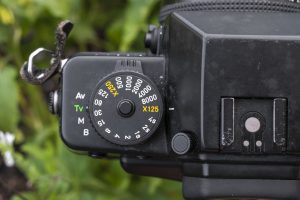
Expanding further, problems with failing electronics are not unique to the Contax RTS III. In my “dead” review of the Canon T90 which was another massively expensive and technology filled camera from around the same era, it was very difficult to find one without the dreaded EEE error. Other models like the Minolta α7, Contax T3, Ricoh GR1, and Nikon F100 all have a significantly higher rate of failure than earlier models, plus with replacement parts for some of these models nearly impossible to find, getting them repaired is less and less of an option.
Sure, it’s still possible to find one of these cameras in working condition today, and I am certain that within minutes of me publishing this article, I will get a message from someone giving me the name of someone who can repair them, but in my opinion, whether you’re just lucky, or you happen to know that one guy who can fix it, I still feel that with a working RTS III, you are on borrowed time.
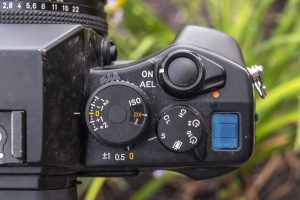
For as high quality of a model as this was 30 years ago, time is not kind to electronic motors, displays, and circuits. Heat, cold, static electricity, and humidity are the enemy to complex electronics and LCD displays, plastic parts that were meant to be flexible become brittle, and plastic parts that were meant to be strong can become soft. I believe there will be a time where all of these cameras are dead, and there won’t be any parts left, or people alive who can repair them.
I really wanted to love the Contax RTS III and use it over and over. It’s a gorgeous camera with a lot of cool features, and it feels great in your hands. This is probably the nicest, and highest featured camera that I have reviewed on my site that I wouldn’t recommend to anyone, at least not at the prices they still sell for online. If you can find an RTS III in working condition, that’s great, but your chances of it one day just deciding not to work are a lot higher than with other models, so if you want to take a chance on one, let me know how it goes, but if it fails on you, don’t say you weren’t warned.
Related Posts You Might Enjoy
External Links
https://camerapedia.fandom.com/wiki/Contax_RTS_III
http://www.mir.com.my/rb/photography/hardwares/classics/contax/index.htm
https://www.invernodreaming.com/blog/contax-rts-iii-review
https://www.hugorodriguez.com/articulos/contaxrts3.htm (in Spanish)

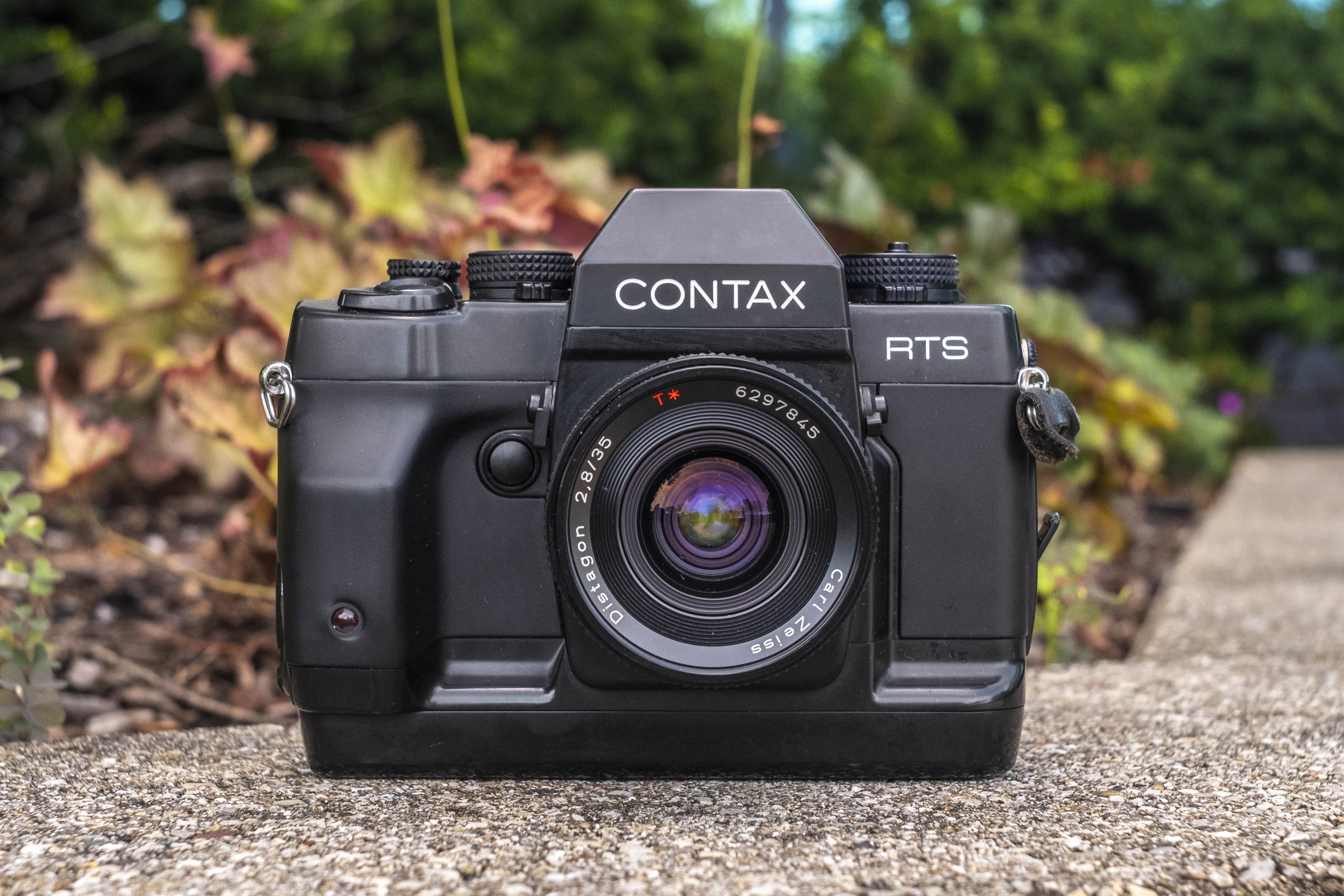
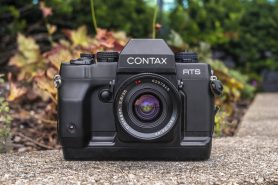

Another great review, even though it’s mostly a cautionary tale. This is exactly why I won’t buy cameras with LCD panels, etc. I really love the style and small size of the Minolta TC-1, but I hear horror stories of them simply becoming paperweights. And at a minimum of $600 used, that’s not a risk I’m willing to take. That’s also why I can never understand the rabid appeal of the Contax T2 and similar electronic point and shoot cameras. On the other hand, my several-decades-old Zeiss folders, Leica M2 and M5, Kodak Retinas, and numerous Japanese rangefinders from the 1950s and 1960s are working just fine, thank you.
That cautionary tale is exactly why I approached this one as a full camera review, instead of an abbreviated Camera of the Dead article as I really wanted to get across to people that while these were spectacular cameras, you should learn from my mistake that they can be viable every day shooters today. If I found another for $50 or so, I would take another chance and perhaps even look at sending it out to someone for repair, but at the premium prices they still charge today, to then have to turn around and spend several hundred more dollars to get them fixed, which doesn’t guarantee that they won’t break again later, just isn’t worth it to me. Especially like you said when theres still thousands of fully mechanical cameras out there that still work great!
I have researched this camera and concluded it was not worth considering due to known reliability issues. Same holds true for the Contax T series. They take great photos when they work but when they don’t they are expensive paperweights.
What amazes me is how the Canon A series has held up in reliability over the years and on the professional side the fully electronic Nikon F4 which still keeps going after many years of hard use by their owners.
It is interesting that there are some exceptions to the “all electronic cameras are bad” rule. The Canon A-series do seem to hold up well, minus the shutter release squeal issue that most have. The electronic shutter on the Nikon F3 has also proven to be very reliable as well. Considering many of those cameras saw severe duty in tough conditions over many years, how many of them still work great today is impressive!
Also the Canon EOS film cameras. I have an original EOS 650 (the first EOS) that works flawlessly, as well as an EOS A2. The Canon A series shutter squeal issue is a fairly trivial fix. What amazes me is how well the electronics have held up.
I looked into the fully mechanical Contax S2, and while it is a beautiful camera with mechanical speeds to 1/4000 seconds, it is still very expensive (over $400 for body only). I have a beautiful, near-mint Nikon FM3A that is also fully mechanical up to 1/4000, and I already have a bunch of Nikon glass. Think I’ll pull it off the shelf and start using it again.
Nice article! Thanks! I really do like the various RTS models, it is a shame that RTS III seems to be in a special category, the cool but not working. The RX and the RTS II which bookend it are both very nice.
I was very lucky to receive a perfect example of this camera from a reader. He first loaned it, but when I tried to give it back, he just kept insisting I keep it longer. It is an amazing camera, but the weight means I don’t use it much. It is one I won’t sell when I do reduce my collection. Apart from the weight, it is a perfect camera experience. Everything seems to be thought of…including the extra shutter release and the dual battery system you mentioned.
That’s a great story for an awesome camera! You definitely got lucky though as since posting this article and sharing it both to Facebook and Reddit, at least 10 or more people have all come forward telling the same tales of woe regarding their inoperable RTS IIIs.
That’s really unfortunate. I’ve wanted to own a CONTAX SLR for a long time, but the prices on anything with that brand are stupid. Kyocera clearly bought/made some of the most fragile and unreliable electronics of that era as well, which makes any of their electronic gear a huge gamble. I still think I’ll get a CONTAX G1 at some point, simply because that was such a unique and pretty camera.
Although it does seem like it is difficult to find a reliable RTS III these days, I don’t think it’s fair to consider all the Contax SLRs as unreliable. I have a perfectly working RTS II that I will one day review, I just did the RTS III review first as I thought it was the more interesting of the two cameras. You should consider the II, it’s a fantastic camera.
Made most of my money as a pro with sheet film cameras and 120, but traded 35mm systems around for a while, even tho I really never shot 35mm for money. I had a Contax system for a while in the 80’s, tho. Two points: All The RTS series cameras were always considered top notch, but they were always considered highly expensive and complicated to repair! Lots of guys just had the 137 or 139, and second, the CZ lenses for the Contax were the best lenses I’ve even had for 35mm, bar none, and I’ve owned them all! The 25mm, 35mm, and 85mm were exceptional, and no lenses I’ve ever had from other manufacturers were anywhere near close to the quality and “look”. What I should have done was buy a new S2b, and just kept that for the rest of my life! Didn’t tho, big mistake…
Dear Mike, Contax RTS III is not a semi-professional camera. instead it is one of the best SLRs ever produced, if not the best in the history of SLR photography of all time. Guaranteed also by numerous Leica owners all over the world. Best.
Great review and I’m happy to hear that the eBay seller did the right thing. Whenever I sell one of my older cameras or “newer” electronics heavy cameras I hold my breath and cross my fingers that the buyer will get a fully working camera that will last. Most of my older cameras are fully working but are collected mostly for display and blogging. I’m constantly reminding myself that whenever I sell a camera, the new owner may be buying it to actually shoot with it on a consistent basis and may push the fragile components to their breaking point in a short time. As you’ve pointed out, the components that make up the RTS III are over 30 years old now and more than likely getting close to their expiration date.
My recently acquired RTS is in good working order but I use it carefully and take great care whenever handling it. My Canon A Series cameras I feel good about and I’ve been lucky with my T-70s too. I’ve stayed away from the T-90 and will avoid the sexy and expensive compacts from Fujifilm, Contax, Minolta and Kyocera that are all the rage. I did break down and purchase a Canon EOS-1N RS that is in great condition but I hesitate to push it to it’s limits.
Your RTS II is probably the better camera anyway.
Yup, the RTS & RTS III are unreliable. The RTS II definitely fares better. All 3 are nice to use when fully working. However the 159MM is the camera I return to every time in the Contax range. Great feature set (1/4000th shutter, 1/250th flash sync, multi program, Av & manual) and, very reliable. Often shows up ‘dead’ on eBay but it’s usually a gummed up fly-wheel on the outside of the mirror box which is normally* pretty easy to get at and repair. If it had been give a spot meter switch it would be close to perfect.
*Some have a clear plastic cover which means a bigger disassembly job.
I actually have an RTS II that I was able to shoot successfully and I really enjoyed it! I was actually about to start writing a review of it, but then I came across a nice working Contax RX that also works great too and I ended up liking that one even more! Now I can’t decide which to review first, the RTS II or the RX! Maybe you could help me decide! 🙂
Just wanted to add that the extra 2 AA batteries gave you the full 5fps on the motordrive, while running the lithium battery limited you to 3.5fps if I recall (I worked in photographic retail back when these were sold new).
This is good to know, and something I never read online, but it makes sense. I am sure sports photographers appreciated the extra speed!